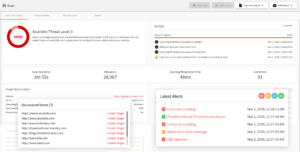How Do You Scan For Vulnerabilities?
Scan For Vulnerabilities
A scanning system identifies known vulnerabilities and security risks that your organization may not be aware of. These systems are usually automated and provide real-time security intelligence. Before you begin scanning for vulnerabilities, make sure you prepare your system. Open the Launch Vulnerability Scan window. Select the title of the scan and fill in the basic information. Click Start to begin the scanning process. Once you have selected the general information, you will need to fill in the details of the scan, such as the type of file to be scanned.
The first step in a vulnerability scanning is to select the type of scanning that you want to conduct. There are two main types of vulnerability scans: passive and active. Passive scanning involves looking at the objects you want to scan, without touching them. Passive scanning can be helpful in testing the patch level of a site. Passive scanning is non-intrusive, and it does not require you to access your website in order to carry out the scan.

Next, you need to choose the frequency of scanning and the type of vulnerability scan. Some vulnerability scanners will allow you to search for vulnerabilities based on their severity, so you can prioritize the most critical issues. Once you have your results, you can start applying the appropriate security controls to your system. You should also be aware of false-positive vulnerabilities and make sure that you implement the necessary security controls to prevent the vulnerability from becoming a real threat.
How Do You Scan For Vulnerabilities?
A network vulnerability scanner is a software program that works with a database of known vulnerabilities. Most of the databases rely on the CVE Program catalog, which contains standardized records of known software and firmware vulnerabilities. Each vulnerability is accompanied by a unique CVE identifier, a brief description, and at least one public reference. It is recommended to scan new systems in a single batch, as this will reduce the time needed to scan for vulnerabilities in your network.
There are two primary types of vulnerability scanning: unauthenticated and authenticated. Unauthenticated vulnerability scans are performed by a tester with no trusted network access. These scans will reveal vulnerabilities that are accessible to unauthorized users. A credentialed vulnerability scan, on the other hand, requires the tester to log in as a network user. The vulnerability scan results will give you a list of vulnerabilities that your organization is likely to be vulnerable to.
Vulnerability scanning is vital in the cybersecurity world. Vulnerabilities are the technological flaws in a system or product that hackers can exploit. If your system has one vulnerability, it’s likely that the attacker can exploit that flaw to steal sensitive information. To ensure compliance, your security team needs to continuously perform vulnerability scanning. New systems are added to networks every day, and new vulnerabilities are found daily.